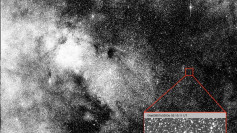NASA's decision not to release new high-resolution images of the interstellar comet 3I/ATLAS has fueled an escalating debate among astronomers, researchers, and online observers, as the comet continues its path through the Solar System. The U.S. space agency has stated that the ongoing federal government shutdown prevents it from publicly sharing the latest imagery, even as critics argue that transparency is essential in real-time scientific discovery. Meanwhile, China's Tianwen-1 orbiter has released its own images, increasing international attention on the object's trajectory and composition.
The comet, first identified in July, has drawn unusual scrutiny due to speculation regarding both its behavior and origin. One of the most prominent voices calling for NASA to release updated imaging is Harvard astrophysicist Dr. Avi Loeb. Dr. Loeb has suggested on multiple platforms that there is a "30 to 40 percent" chance that 3I/ATLAS is not a naturally formed object, though he maintains that a conventional explanation remains more likely.
Dr. Loeb has tracked the comet's motion and published observational updates on his Medium account. In one update, he noted that the comet may be behaving unusually as it moves toward the Sun. He also criticized NASA for declining to publish a set of high-resolution images taken on October 2 by the Mars Reconnaissance Orbiter.
"The truth is not decided by authority. NASA has no authority over nature to tell us what nature is. I mean, it's decided by data," Dr. Loeb said. He added, "I find it really peculiar for NASA, it's sort of the signature of a bureaucratic body where hierarchy decides what is being done, and somehow, someone in the leadership decided to make a very bold and strong statement without attending of the data."
Speculation surrounding NASA's withholding of the new images accelerated online, ranging from routine administrative delays to suggestions that the comet could be a disguised extraterrestrial craft. However, according to NASA, the explanation is procedural.
In a statement to LADbible, the agency said, "NASA is a part of the federal government, which is currently shut down. Communications that do not pertain to the safety or property of life are not exempted," adding, "Imagery will be released once the government reopens."
While NASA remains limited in public communications, China's space program released visual data of the comet shortly after. The China National Space Administration stated that its Tianwen-1 orbiter captured a sequence of images of 3I/ATLAS between October 1 and October 4, including a clearer static frame on October 3.
"This was the first attempt to photograph such a distant and relatively dim target," the CNSA said, noting that 3I/ATLAS is 10,000 to 100,000 times dimmer than typical imaging subjects. The agency said, "The use of the high-resolution camera carried by the Tianwen-1 orbiter was determined, and key imaging strategies were carefully designed, ultimately leading to the successful completion of the observation."



